Rebuilding of Turbocharger Shafts by Hardfacing
Abstract
1. Introduction
2. Research Material and Methodology
3. Findings and Discussion
3.1. Metallographic Examination
3.2. X-ray Microanalysis
3.3. Hardness Measurements
4. Conclusions
- Worn surface layers of steel journals of turbocharger shafts of automotive engines (e.g., Peugeot 307-1.6 HDI and Laguna 1.9 DCI) can be subjected to the process of their rebuilding by arc hardfacing of hard coatings.
- Coatings applied to the journals of the remanufactured shafts are characterized by a fine-grained martensitic structure with fine spherical dispersive hard carbides containing M23C6-type chromium arranged in the matrix.
- As a result of surfacing with wire with powder cores with an increased content of 0.6% C and 5.4% Cr, coatings were obtained with a hardness twice as high as the hardness of the turbo-compressor shaft journal cores.
- Coating structure, with a hardness of almost twice that of the highly tempered martensite structure of new shafts, should, in turn, provide better abrasive wear resistance for these important structural components of turbochargers.
Author Contributions
Funding
Institutional Review Board Statement
Informed Consent Statement
Data Availability Statement
Conflicts of Interest
References
- Seifoori, S.; Parrany, A.M.; Khodayari, M. A high-cycle fatigue failure analysis for the turbocharger shaft of BELAZ 75131 mining dump truck. Eng. Fail. Anal. 2020, 116, 104752. [Google Scholar] [CrossRef]
- Idzior, M.; Bieliński, M.; Borowczyk, T.; Daszkiewicz, P.; Stobnicki, P. A simulation study of turbocharger intake leakage on its efficiency. Combust. Engines 2012, 51, 64–71. [Google Scholar] [CrossRef]
- Hadryś, D.; Bąkowski, H.; Stanik, Z.; Kubik, A. Analysis of shaft wear in turbocharges of automotive vehicles. Transp. Probl. 2019, 14, 85–95. [Google Scholar] [CrossRef]
- Dudziński, W.; Haimann, K.; Lachowicz, M. Struktura i własności materiałowe łożysk ślizgowych turbosprężarek współpracujących z silnikami spalinowymi. Tribol. Tarcie Zużycie Smarowanie 2002, 4, 1133–1141. [Google Scholar]
- Danilecki, K. Trends in the development of turbocharging systems in automotive vehicles. Siln. Spalinowe 2008, 47, 61–76. [Google Scholar] [CrossRef]
- Schweizer, B. Oil whirl, oil whip and whirl/whip synchronization occurring in rotor systems with full-floating ring bearings. J. Nonlinear Dyn. 2009, 328, 156–190. [Google Scholar] [CrossRef]
- Idzior, M.; Bieliński, M.; Borowczyk, T.; Karpiuk, W. Analiza wpływu warunków eksploatacji na stan techniczny turbosprężarek doładowanych silników spalinowych. Logistyka 2011, 3, 1129–1139. [Google Scholar]
- Hermawan, M.R.; Sonawanb, H. Case Study: Failure analysis of induced draft fan after serious inspection by overlay welding. Eng. Fail. Anal. 2020, 118, 104855. [Google Scholar] [CrossRef]
- Shilun, Z.; Xiong, Z.; Gang, Z. Comprehensive welding technology for type 304 stainless steel rotating shaft. Procedia Eng. 2011, 24, 840–844. [Google Scholar] [CrossRef][Green Version]
- Zangeneh, S.; Ketabchi, M.; Kalaki, A. Fracture failure analysis of AISI 304L stainless steel shaft. Eng. Fail. Anal. 2014, 36, 155–165. [Google Scholar] [CrossRef]
- Burkinshaw, M.; Blacker, D. The high temperature tribological performance of turbocharger wastegate materials. In 11th International Conference on Turbochargers and Turbocharging: 13–14 May 2014; Institution of Machanical Engineers: London, UK, 2014; pp. 289–298. [Google Scholar]
- Romagnoli, A.; Manivannan, A.; Rajoo, S.; Chiong, M.S.; Feneley, A.; Pesiridis, A.; Martinez-Botas, R.F. A review of heat transfer in turbochargers. Renew. Sustain. Energy Rev. 2017, 79, 1442–1460. [Google Scholar] [CrossRef]
- Deligant, M.; Podevin, P.; Descombes, G. Experimental identification of turbocharger mechanical friction loss. Energy 2012, 39, 388–394. [Google Scholar] [CrossRef]
- Chuepeng, S.; Saipom, S. Lubricant thermo-viscosity effects on turbocharger performance at low engine load. Appl. Therm. Eng. 2018, 139, 334–340. [Google Scholar] [CrossRef]
- Tian, L.; Wang, W.J.; Peng, Z.J. Effects of bearing outer clearance on the dynamic behaviours of the full floating ring bearing supported turbocharger. Mech. Syst. Signal Process. 2012, 31, 155–175. [Google Scholar] [CrossRef]
- Zheng, X.Q.; Zhang, Y.J.; Yang, M.Y. Research and development on transonic compressor of high pressure ratio turbocharger for vehicle internal combustion engines. Sci. China Technol. Sci. 2010, 53, 1817–1823. [Google Scholar] [CrossRef]
- Wojciechowski, H.; Żółtowski, B. Exploitation of Car Turbochargers-Selected Problems, 8th International Conference Diagnostics of Machines and Vehicles. MATEC Web Conf. 2019, 302, 01024. [Google Scholar] [CrossRef]
- Kaszkowiak, J.; Borowski, S.; Dulcet, E.; Zastempowski, M. Damage Analysis of Turbochargers. Logistyka 2015, 4, 1885–1892. [Google Scholar]
- Idzior, M.; Wichtowska, K.; Kinal, G. The investigation of conditions of work and their influence on work of shafts of turbochangers combustion engines. Logistyka 2014, 3, 2395–2403. [Google Scholar]
- Yang, K.; Fletcher, K.A.; Styer, J.P.; Lam, W.Y.; Guinther, G.H. Engine Oil Components Effects on Turbocharger Protection and the Relevance of the TEOST 33C Test for Gasoline Turbocharger Deposit Protection. SAE Int. J. Fuels Lubr. 2017, 10, 815–821. [Google Scholar] [CrossRef]
- Bridigum, T. Welding: Everything You Need to Know; Motorbooks International: Osceola, WI, USA, 2022; 160p. [Google Scholar]
- Singh, R. Applied Welding Engineering, Processes, Codes and Standards; Butterworth-Heinemann: Oxford, UK, 2020. [Google Scholar]
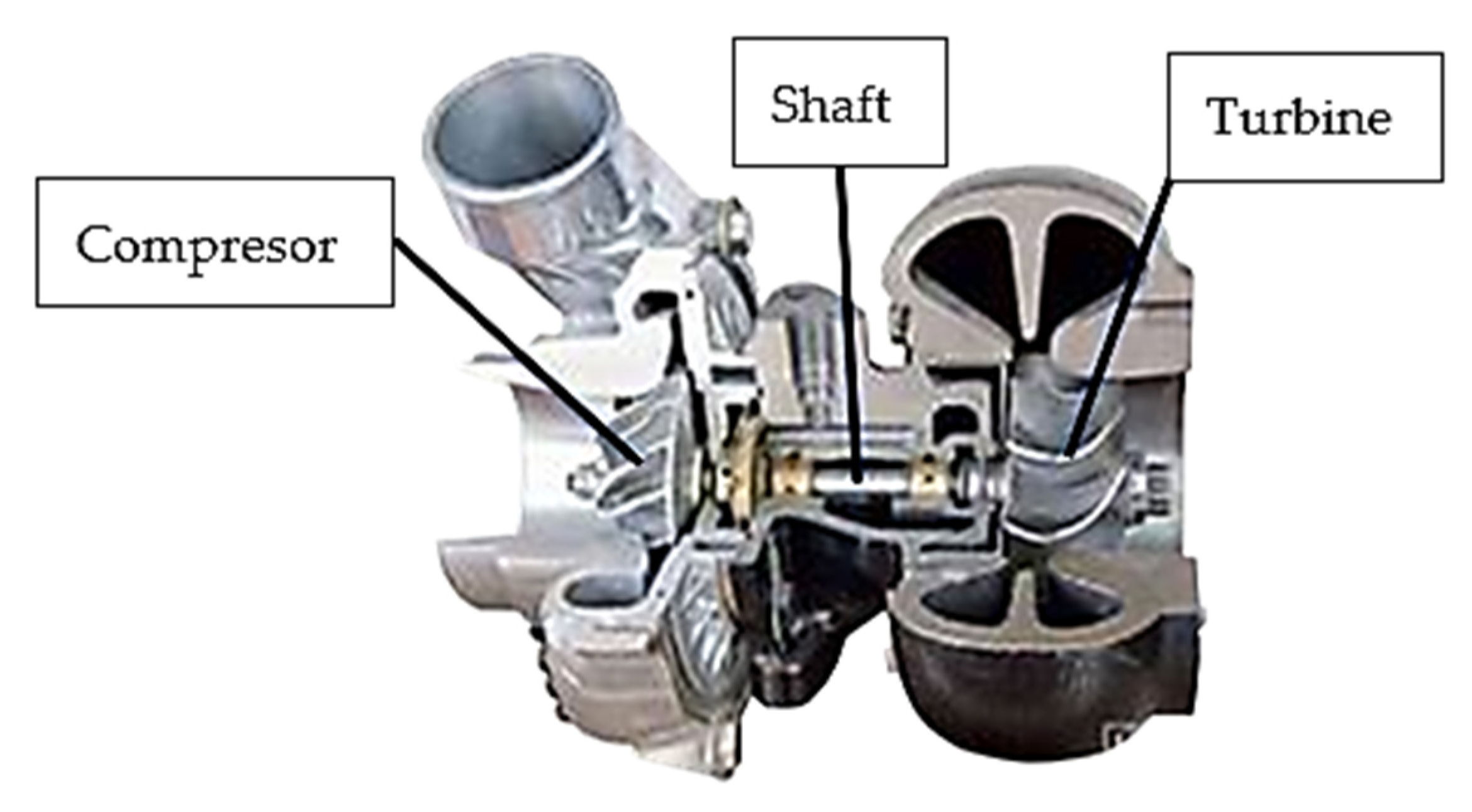
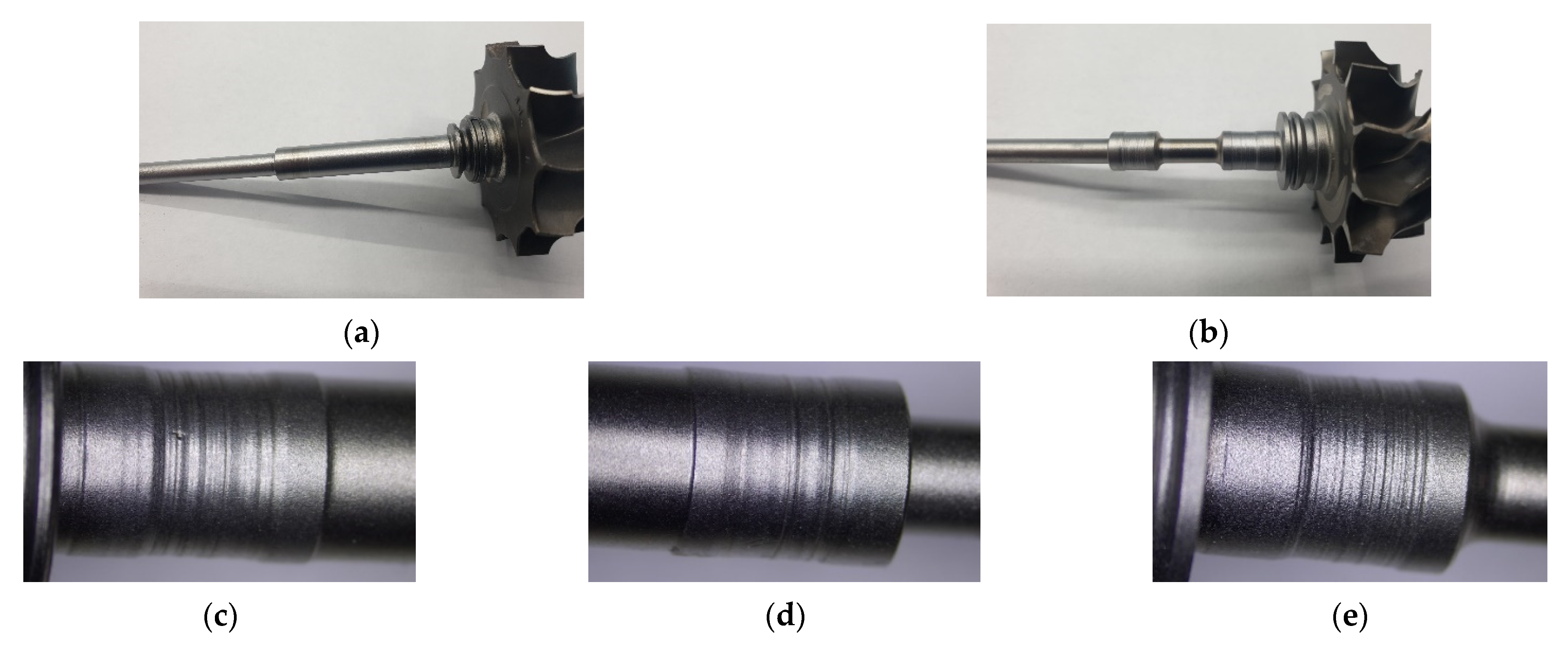

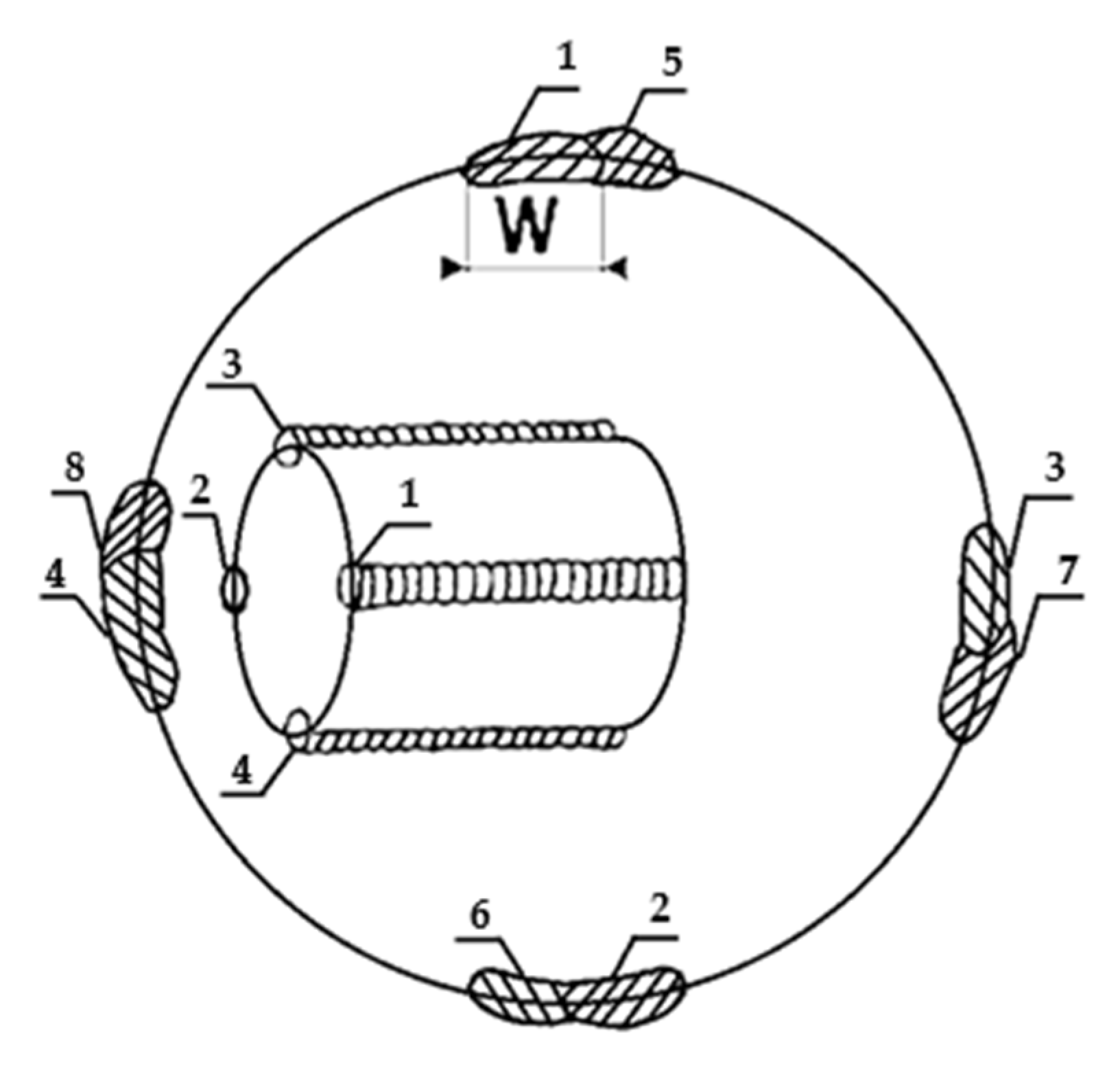

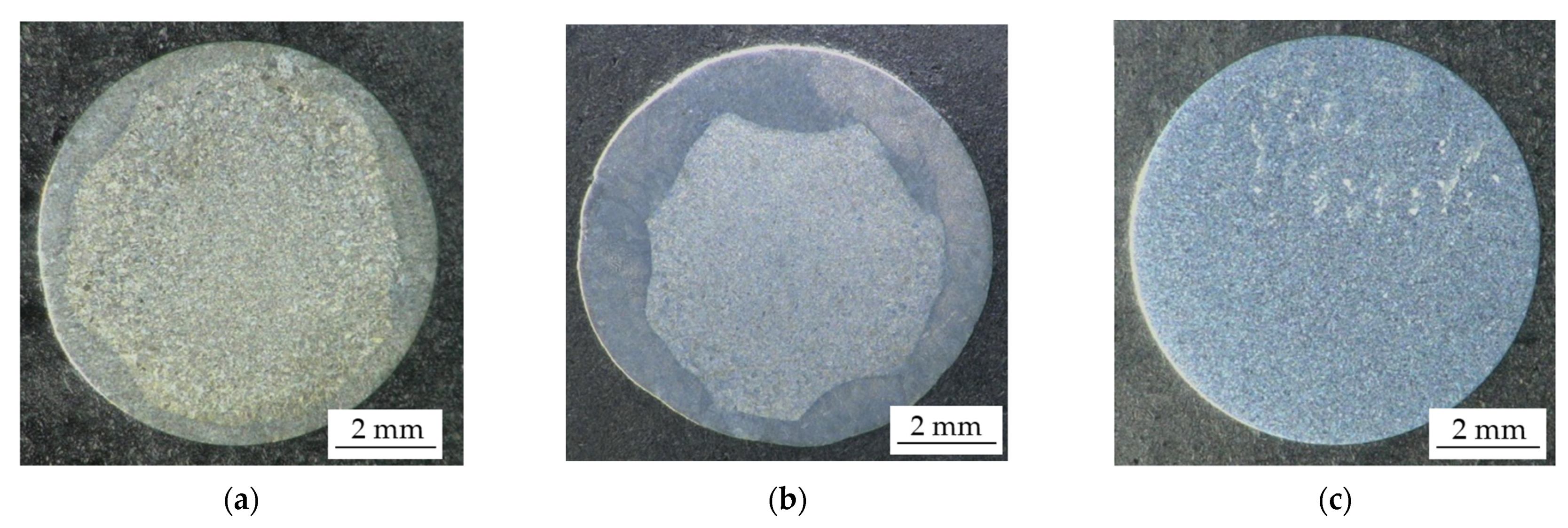
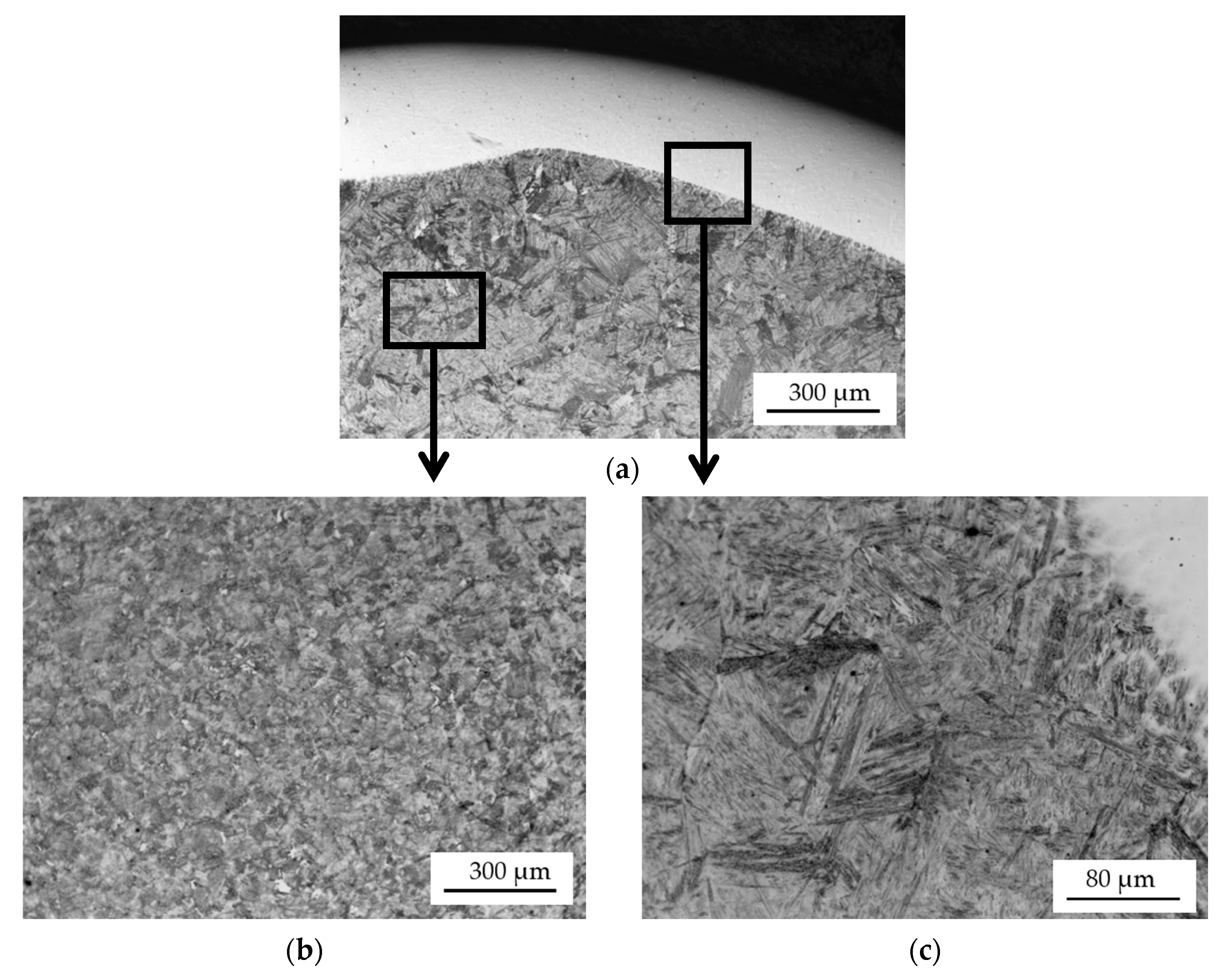
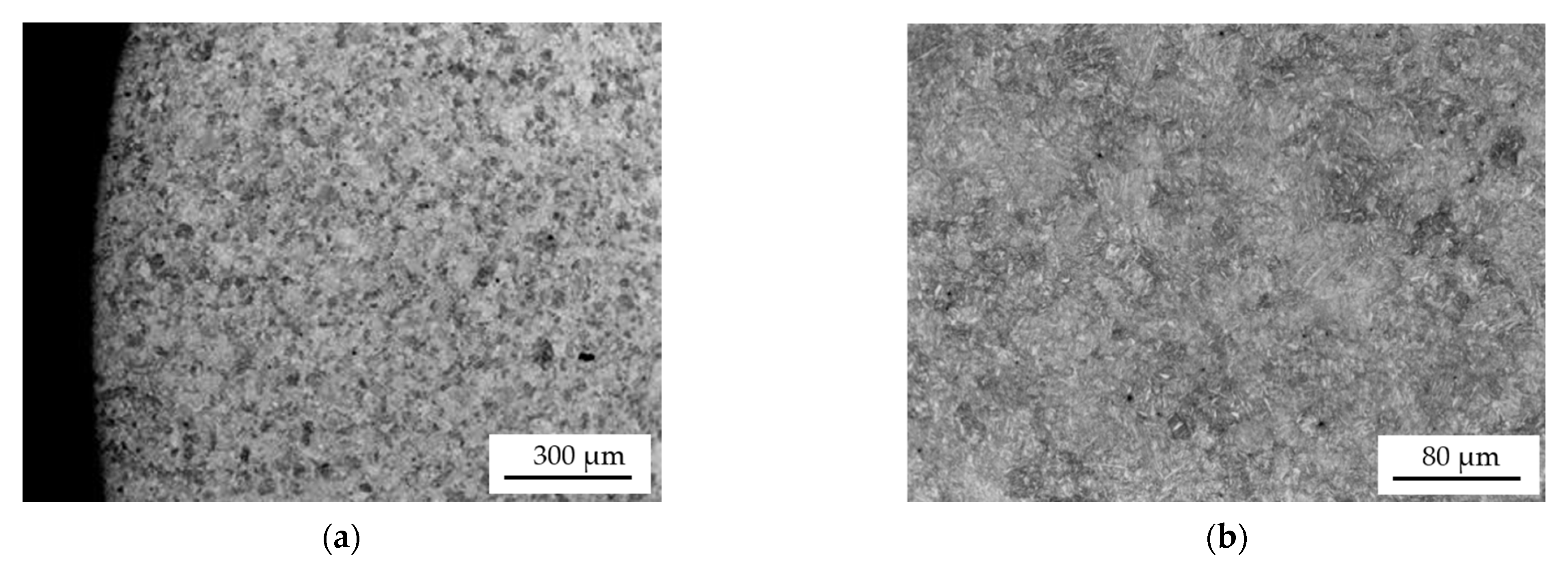
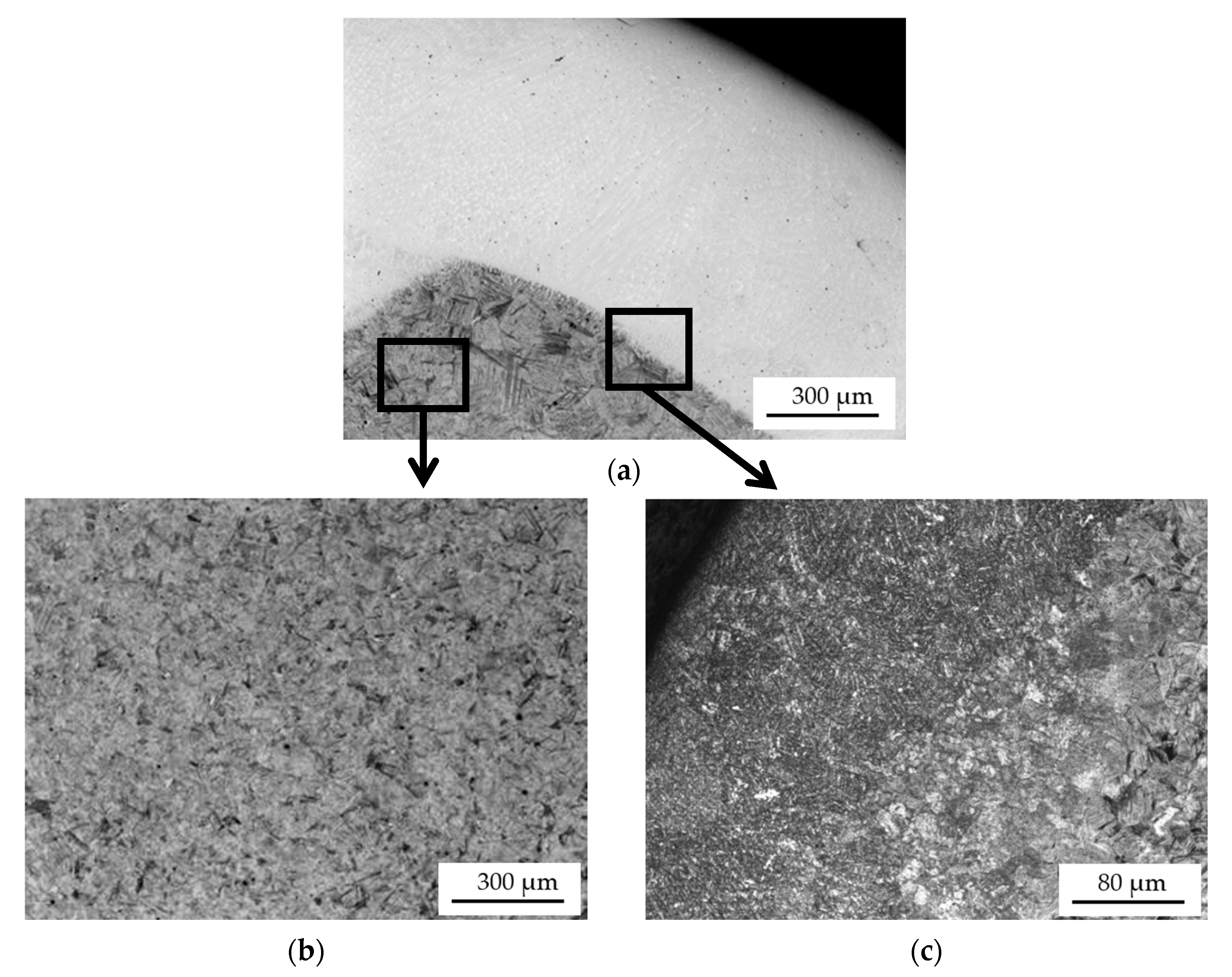
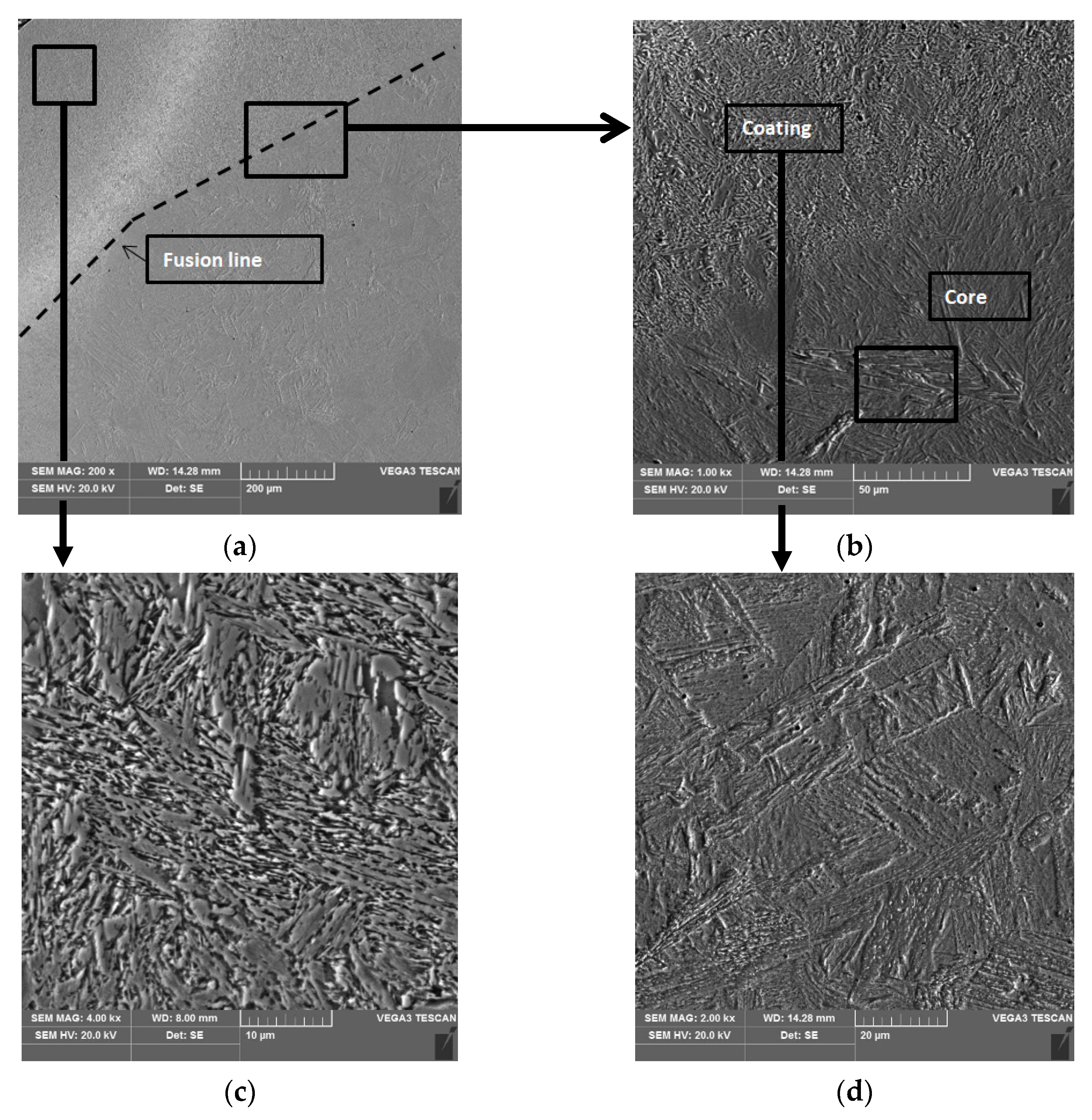
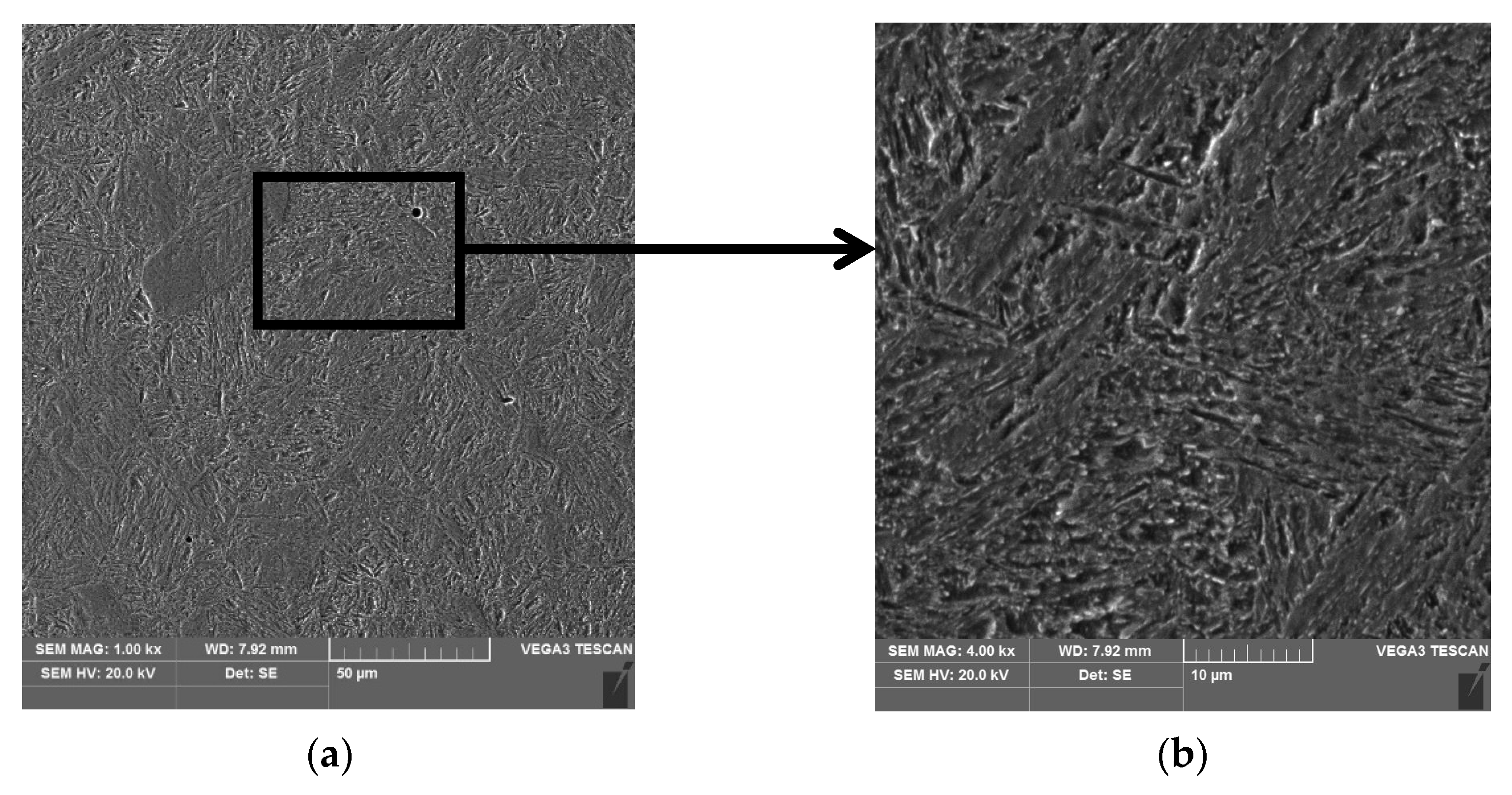
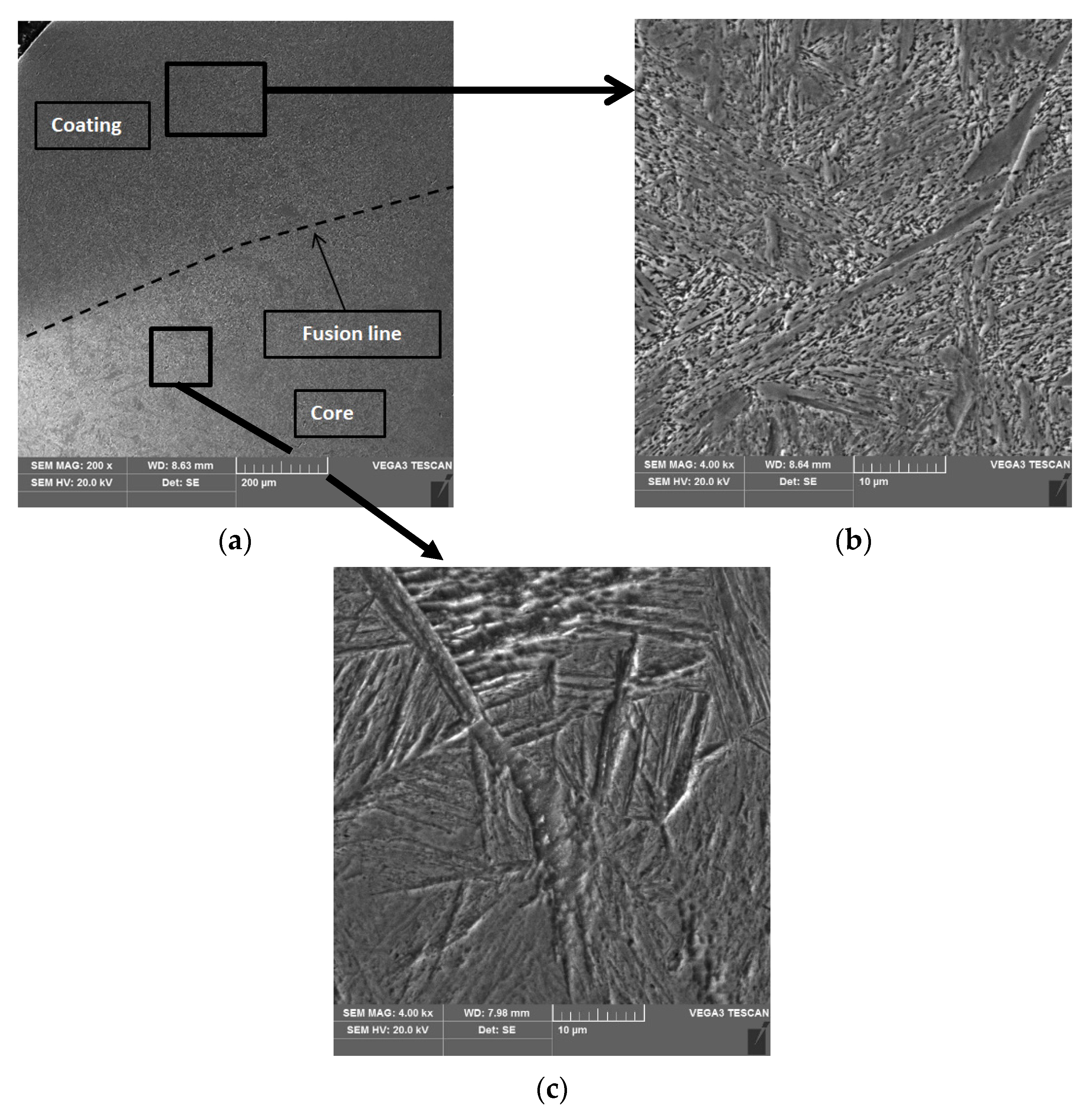
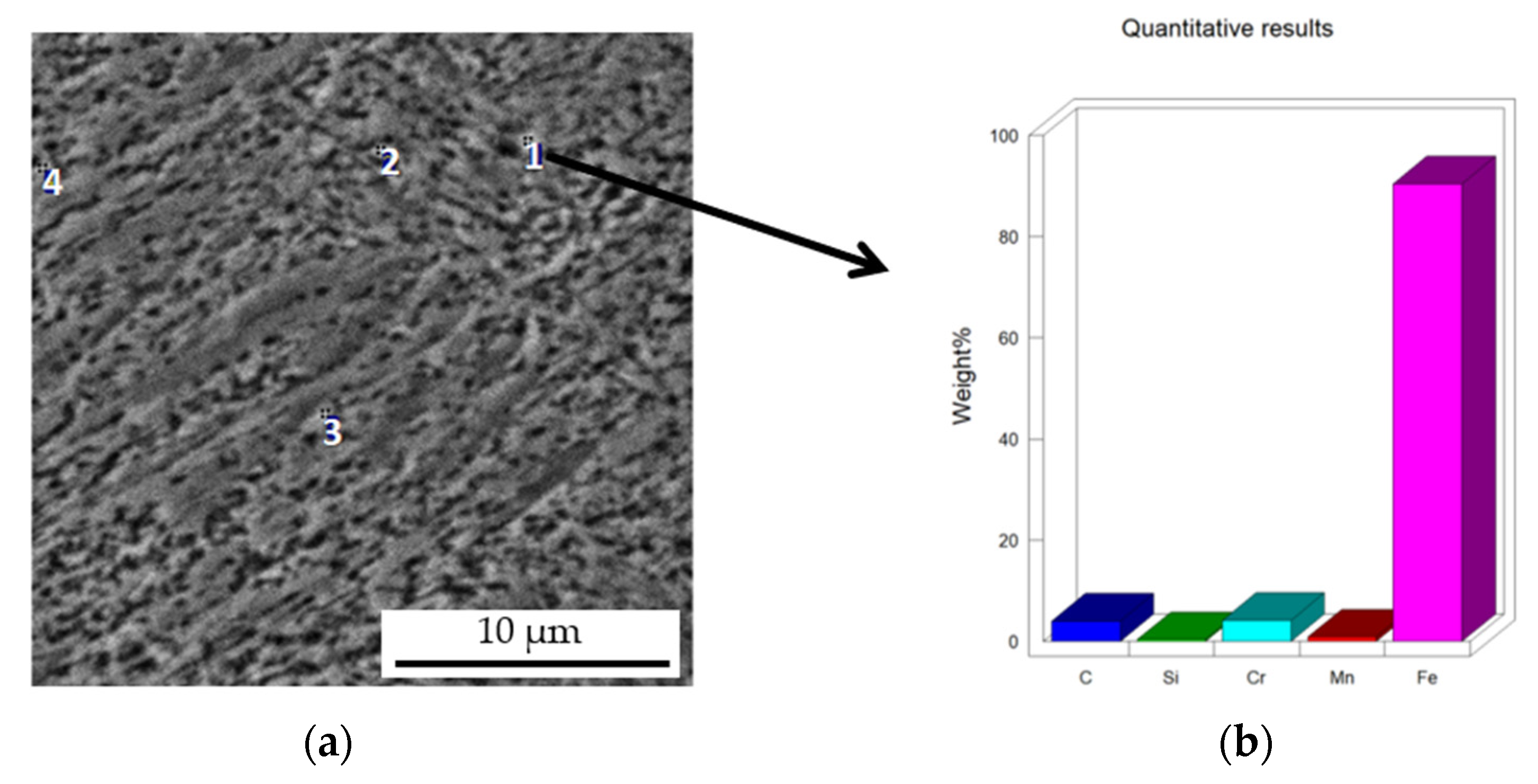
| No. of the Micro-Area | C | Si | Cr | Mn | Fe |
|---|---|---|---|---|---|
| 1. | 4.01 (16.15) * | - | 4.18 (3.90) * | 0.87 (0.77) * | balance |
| 2. | 4.01 (16.15) * | 0.52 (0.89) * | 3.86 (3.59) * | 1.05 (0.93) * | balance |
| 3. | 5.28 (20.47) * | 0.50 (0.83) * | 3.82 (3.42) * | 1.17 (0.99) * | balance |
| 4. | 4.48 (17.87) * | - | 4.23 (3.90) * | 1.11 (0.97) * | balance |
| Single-Layer Coating | Journal Core with Single-Layer Coating | Double-Layer Coating | Journal Core with Double-Layer Coating | New Shaft | |
|---|---|---|---|---|---|
| Hardness, HV5 | 742, 749, 740, 745, 746 | 576, 575, 602, 580, 581 | 761, 772, 770, 773, 778 | 494, 423, 445, 450, 460 | 380, 384, 382, 380, 378 |
| On average, HV5 | 745 | 580 | 770 | 455 | 380 |
Publisher’s Note: MDPI stays neutral with regard to jurisdictional claims in published maps and institutional affiliations. |
© 2022 by the authors. Licensee MDPI, Basel, Switzerland. This article is an open access article distributed under the terms and conditions of the Creative Commons Attribution (CC BY) license (https://creativecommons.org/licenses/by/4.0/).
Share and Cite
Kupiec, B.; Opiekun, Z.; Dec, A. Rebuilding of Turbocharger Shafts by Hardfacing. Materials 2022, 15, 5761. https://doi.org/10.3390/ma15165761
Kupiec B, Opiekun Z, Dec A. Rebuilding of Turbocharger Shafts by Hardfacing. Materials. 2022; 15(16):5761. https://doi.org/10.3390/ma15165761
Chicago/Turabian StyleKupiec, Bogdan, Zenon Opiekun, and Andrzej Dec. 2022. "Rebuilding of Turbocharger Shafts by Hardfacing" Materials 15, no. 16: 5761. https://doi.org/10.3390/ma15165761
APA StyleKupiec, B., Opiekun, Z., & Dec, A. (2022). Rebuilding of Turbocharger Shafts by Hardfacing. Materials, 15(16), 5761. https://doi.org/10.3390/ma15165761






